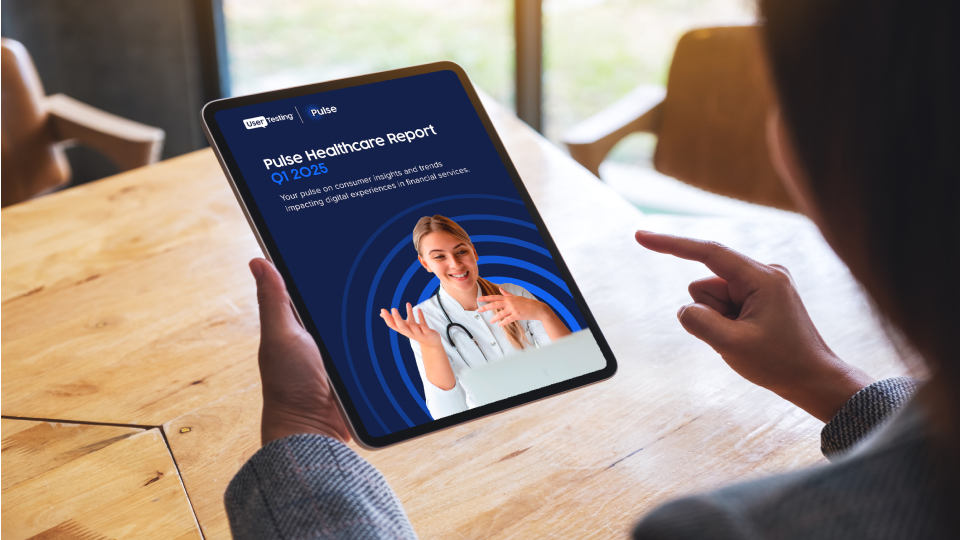
What is patient experience?

While it’s not hard to imagine what patient experience means, keeping the focus on patients is challenging. In one sense, patient experience represents a performance indicator for the quality of treatment an individual receives during care. To patients, their experience is more than a quantitative data point. It’s how effective or enjoyable they believe their experience was in terms of communication, respect, dignity, and emotional support throughout their experience of the healthcare process. It’s the sum of all interactions during a patient’s healthcare journey, from a provider's culture, processes, facilities, people, technology, and more.
What is digital patient experience?
Digital patient experience is made up of patients' interactions during their care journey that are online or powered by technology. From filling out forms in the waiting room using a tablet to messaging your provider via a patient portal, digital interactions make up a significant part of the patient experience.
The beauty of digital patient experience is that it’s trackable, measurable, and easier to optimize than in-person touchpoints.
Why is digital patient experience important?
Many of us will agree that healthcare looks different today than it did a decade ago. Patients have greater access to health information and heightened expectations for easy and enjoyable experiences. Meanwhile, the U.S.’s projected shortage of up to 124,000 physicians in the next 11 years and the impending advances of AI are sure to shake things up. All of this to say: changes in medicine are on the horizon.
Changes will come with benefits and challenges. While no one can predict precisely what patient experience will look like 10 or 20 years from now, having an effective patient feedback process will help teams stay ahead of it. Healthcare organizations can benefit significantly from proactively implementing communication systems that lead to taking action with patient insight.
Understanding patients' needs helps healthcare leaders guide quality care improvements and hold organizations accountable to their communities. Optimizing each step of the care continuum doesn’t just lead to better patient outcomes. It also helps providers implement more efficient processes, understand priorities, hire needed roles, reduce internal friction, and boost team morale through improved care.
Patient experience and the future of healthcare
In 2020, the pandemic forced healthcare to adopt technology at an accelerated rate. Clinics looked for new ways to streamline their intake process by incorporating virtual check-ins, forms, and appointments. Telehealth visits skyrocketed from 1 to 43 percent of primary care visits.
Technological advances have pleased many digitally native patients who love the convenience of telehealth. However, some industry experts and clinicians have expressed concern about opening Pandora’s Box of virtual healthcare.
An over-reliance on technology could further marginalize communities that are already distrustful of healthcare or unaccustomed to digital experiences. On the provider’s side, technological adoption creates new clinic learning curves. A study by Deloitte showed that 85 percent of medical professionals need more training in providing virtual care.
Technology and optimizing patient-centric experiences
Just because people like convenience, it doesn’t mean they’re willing to sacrifice interpersonal care. A study by Abbott found that 72 percent of patients wanted more personalized care. Clinicians, for their part, want to provide that care. For most of them, the interpersonal element is why they pursued medicine in the first place. The question is: How can they reap the benefits of new technology while preserving the human core of patient care? There’s no simple answer, but a good rule of thumb is to select technology that improves the interpersonal dimension of patient experience rather than seeking to replace it.
Gathering HIPAA-compliant patient feedback is a vital component of a patient-centric approach. But post-appointment surveys aren’t enough. Patient-centricity means creating communication systems that can positively impact the end-to-end patient experience. For organizations, this means leveraging technology to improve patient interactions throughout the journey.
Measuring end-to-end patient experiences
It starts with patient awareness and education as they begin to explore their healthcare options. Some organizations have incorporated videos into their websites to educate patients and prepare them for the visit. Personalized emails can offer information about a patient’s needs when making an appointment.
Organizations can leverage better intake technology and processes to make healthcare workers’ time with patients more efficient and impactful, leading to better relationships. During appointments, clinicians can use new tools and software to help them communicate concepts and simulate health outcomes so that patients have a better understanding of their diagnoses.
The patient experience doesn’t end when their appointment concludes. Studies have shown that 9 out of 10 patients don’t fully understand or remember what to do after a visit to the doctor. Organizations can alleviate this problem with tailored follow-up messaging summarizing the next steps. As the popularity of wearable health monitoring continues to increase, we’re quickly approaching an era of continuous patient experience. Care might eventually become ongoing, with patients and providers exchanging data for guidance in real time.
Patient experience vs. patient satisfaction
To fully understand patient experience, it’s important to quickly mention another term historically emphasized in healthcare: patient satisfaction. While patient experience refers to every major and minor interaction with a health system, patient satisfaction is subtly different.
Patient satisfaction is a legacy metric that typically describes how an individual’s visit to a healthcare facility meets their expectations. This lagging indicator is subjective and depends on factors like patient background, socioeconomics, demographics, geography, etc. Understanding this difference gives researchers two distinct factors when evaluating their overall care for the community.
Why are we bringing this up? Because two people can have an identical “patient experience” and report different levels of “patient satisfaction.” Getting quantitative and qualitative healthcare data helps healthcare teams investigate which stages of patient experience need optimization.
Staying patient-centric
Patient experience can only be as great as the people, processes, and systems put in place. Regardless of what the future brings, excellent patient care will focus on empathy between caregiver and individual. A patient-centric approach to healthcare means an inexhaustible commitment to alleviating suffering at every phase of the patient experience, even if that suffering is as small as a frustrating check-in or billing process. There are always opportunities for improvement. The only way to see those opportunities is by deepening patient understanding.






